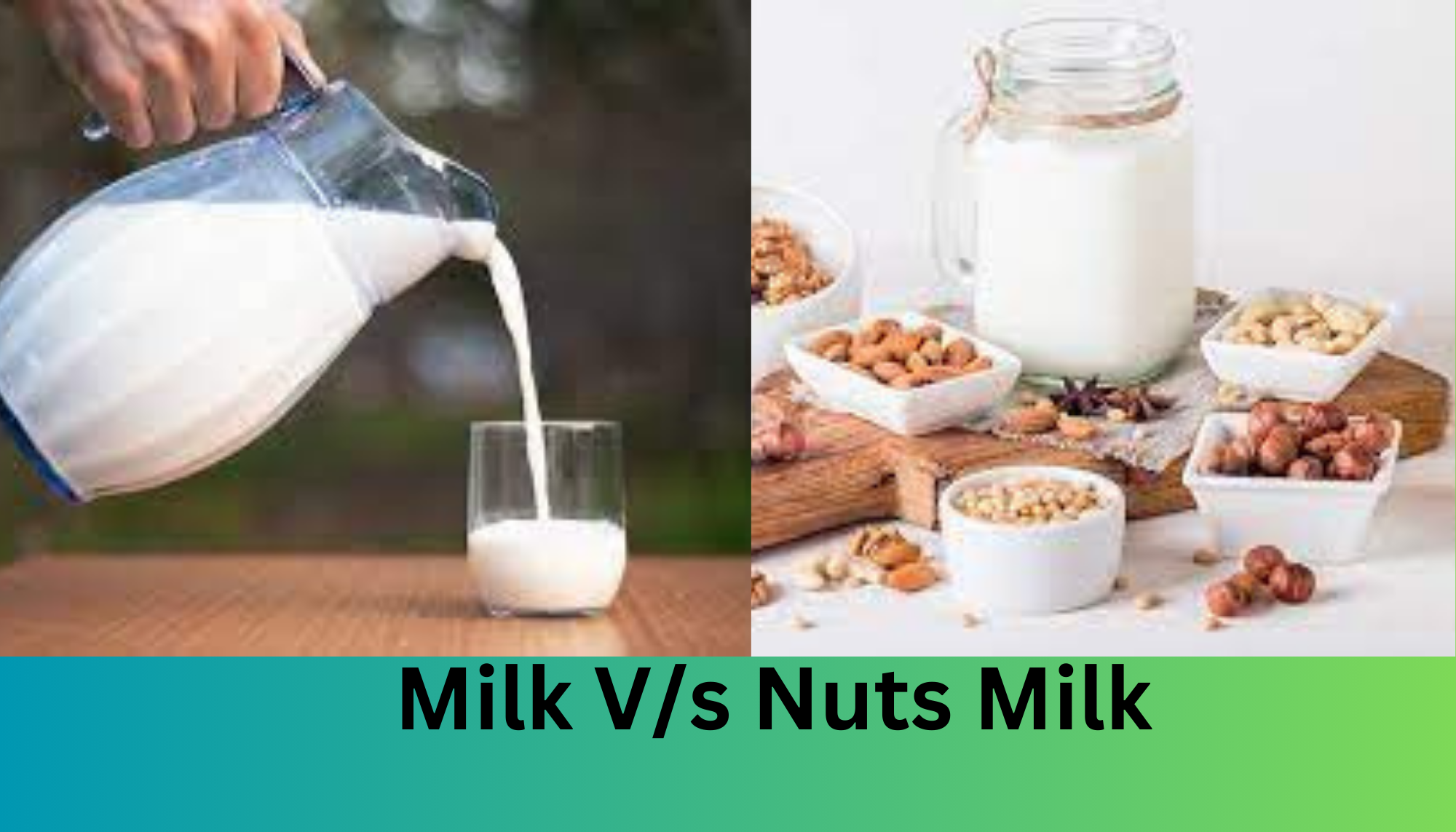When comparing cow’s milk and nut milk, you need to consider several factors such as nutritional content, dietary preferences, and health considerations. Below is an overview of the two types of milk:
- Nutritional Content:
- Cow’s Milk: It is a rich source of calcium, protein, vitamin D, and vitamin B12. It provides a complete protein source and is also a source of saturated fat.
- Nut Milk (such as almond, soy, or oat): It usually contains less protein than cow’s milk, but it can be fortified with nutrients like calcium and vitamin D. Nut milk can also provide healthy fats and some vitamins and minerals depending on fortification.
2. Calories and Fat:
- Cow’s Milk: The fat content varies depending on the type (whole, 2%, skim, etc.).
- Nut Milk: It generally contains fewer calories and saturated fat than whole cow’s milk. However, fat content varies among different nut milk varieties.
3. Lactose and Dairy Allergies:
- Cow’s Milk: Some people may have difficulty digesting lactose, a natural sugar found in milk (lactose intolerance).
- Nut Milk: It is a dairy-free alternative suitable for people with lactose intolerance or dairy allergies.
4. Protein:
- Cow’s Milk: It contains higher amounts of complete protein, which includes all essential amino acids.
- Nut Milk: Protein content is generally lower, and the quality of protein may vary depending on the nut or plant source.
5. Nutrients and Fortification:
- Cow’s Milk: It is naturally rich in nutrients like calcium, phosphorus, and vitamin B12.
- Nut Milk: It may be fortified with nutrients like calcium, vitamin D, and vitamin B12 to match or exceed cow’s milk’s nutritional profile.
6. Dietary Considerations:
- Cow’s Milk: It is a common allergen and not suitable for those with lactose intolerance, dairy allergies, or ethical reasons.
- Nut Milk: It is suitable for vegans, people with dairy allergies, and those following a plant-based diet. However, individuals with nut allergies should avoid nut-based milks.
7. Environmental Impact:
- Cow’s Milk: It can have a higher environmental impact in terms of greenhouse gas emissions, water use, and land use compared to some nut milks.
- Nut Milk: It generally has a lower environmental impact, especially if produced using sustainable practices.
8. Taste and Texture:
- Cow’s Milk: It has a creamy and familiar taste and texture.
- Nut Milk: Varieties may have unique flavors and textures based on the type of nut or plant source.
9. Cooking and Baking:
- Cow’s Milk: It is traditionally used in cooking and baking due to its taste and texture.
- Nut Milk: It is suitable for most cooking and baking purposes.
In deciding between cow’s milk and nut milk, it all comes down to personal dietary preferences, health requirements, and ethical beliefs. While cow’s milk is rich in complete protein and a range of nutrients, it may not be suitable for those who are lactose intolerant or have dairy allergies. Nut milk, on the other hand, is a dairy-free, plant-based alternative with varying nutrient profiles depending on the nut or plant source and fortification. It’s important to carefully read labels, consider nutritional content, and choose fortified varieties if you’re looking for a nutritional equivalent to cow’s milk. Consulting with a healthcare professional or registered dietitian can help you make an informed decision that aligns with your unique dietary goals and health needs.




